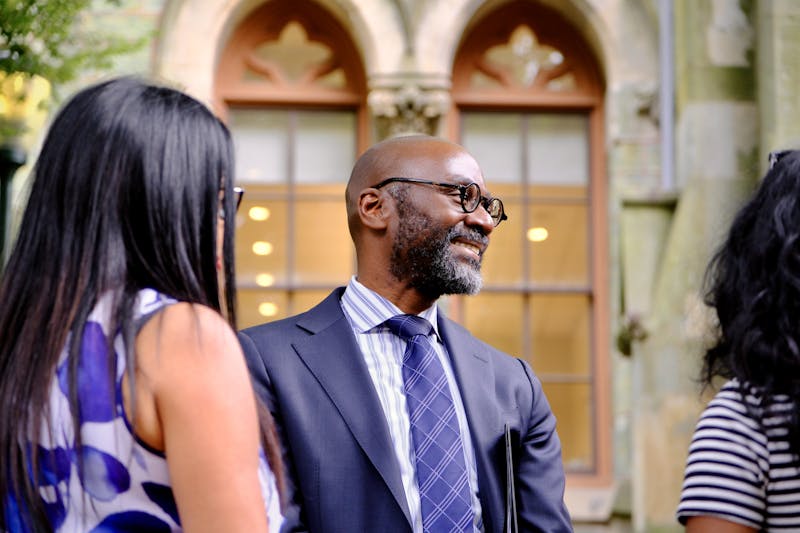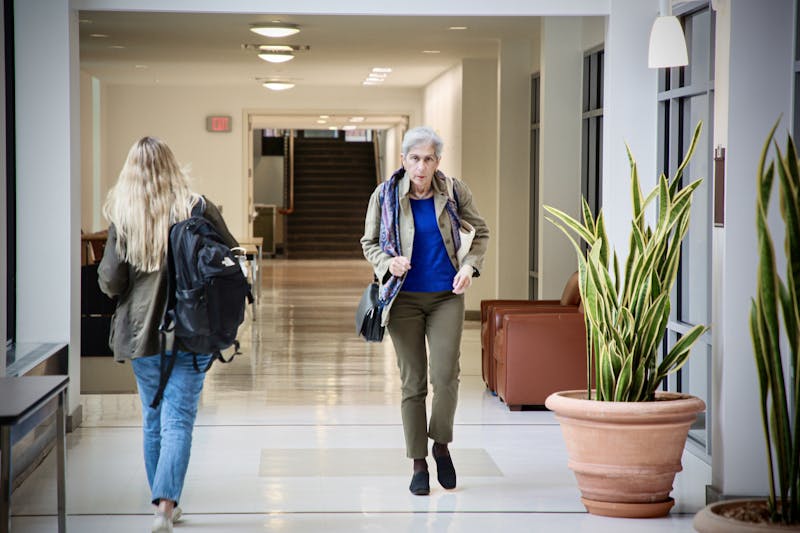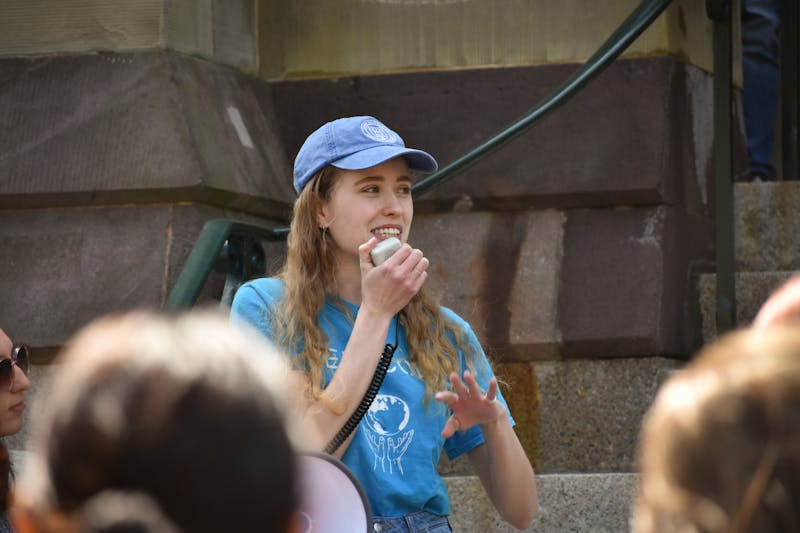Bicycle safety has been pushed to the forefront after two fatal bike accidents occurred on campus. The task force on bicycle and pedestrian safety appointed by University President Judith Rodin at this month's University Council meeting has been meeting regularly for the past few weeks to find ways for Penn to increase safety for bicyclists. The issue has gained particular prominence this year following two fatal bicycle accidents in October that both occurred at busy intersections on the eastern end of campus. "The issue of bicycle safety against vehicular traffic -- and indeed of pedestrian safety against bicycle traffic -- is very much on people's minds," Rodin told the Council two weeks ago. The committee, chaired by Vice President for Government, Community and Public Affairs Carol Scheman and Vice President for Public Safety Thomas Seamon, has considered methods ranging from the installation of permanent bike lanes to 30-second all-way stops at busy intersections. "The question really for us is how we can find ways to make one of the preferred modes of transportation safer," Scheman said yesterday. Of particular importance to the committee, according to Scheman, is the issue of intersections, which are considered by many to be the most dangerous place for bicyclists. Wharton freshman Michael Yang was killed last month when the bicycle he was riding collided with a truck at the intersection of 33rd and Spruce streets. And just a week before, 70-year-old Benjamin Tencer, who was taking classes at Penn as part of a special program for senior citizens, died two days after being hit by a car at the intersection of 34th and Walnut streets. In both incidents, officials stressed that bicycle lanes would likely not have prevented the accidents, so the committee is focusing on ways to slow down traffic at some of the area's busiest intersections. An all-way stop lasting for about 30 seconds, for instance, would simultaneously turn all traffic lights red at particularly busy intersections, allowing all pedestrians to cross at a certain time. The city also has rules -- though not always obeyed -- forbidding cars to make right turns on red lights and forcing them to yield to pedestrians. According to Scheman, the University has been in contact with the Pennsylvania Department of Transportation and other city officials since many of the roads that cut through campus -- including Walnut and Chestnut streets -- are state highways. Scheman also noted that bicyclists should make sure they are taking precautions to ensure their own safety by wearing bright clothing in the evening, stopping at intersections and yielding to pedestrians. "We have to get students to behave the way they behaved when they were at home and were five [years old]," she said. "The most important and immediate thing is that people on bikes realize that they are outweighed by cars and need to be careful." The committee also includes University Director of Community Relations Glenn Bryan, Director of University Communications Ken Wildes, Vice President for Facilities Omar Blaik, Transportation Professor Vukan Vuchic and Wharton junior Jon Glick, who chairs the Facilities Committee of the Undergraduate Assembly. Glick, who noted that the UA has set up a focus group of its own to explore the issue, said members of the Penn community should be aware of the risks of living in and traveling throughout a busy urban campus. "You have to be safe and pay attention to where you're walking," Glick said. "There is a great need for a pedestrian-friendly campus, and hopefully, changes will be made as soon as possible."
The Daily Pennsylvanian is an independent, student-run newspaper. Please consider making a donation to support the coverage that shapes the University. Your generosity ensures a future of strong journalism at Penn.
DonatePlease note All comments are eligible for publication in The Daily Pennsylvanian.







